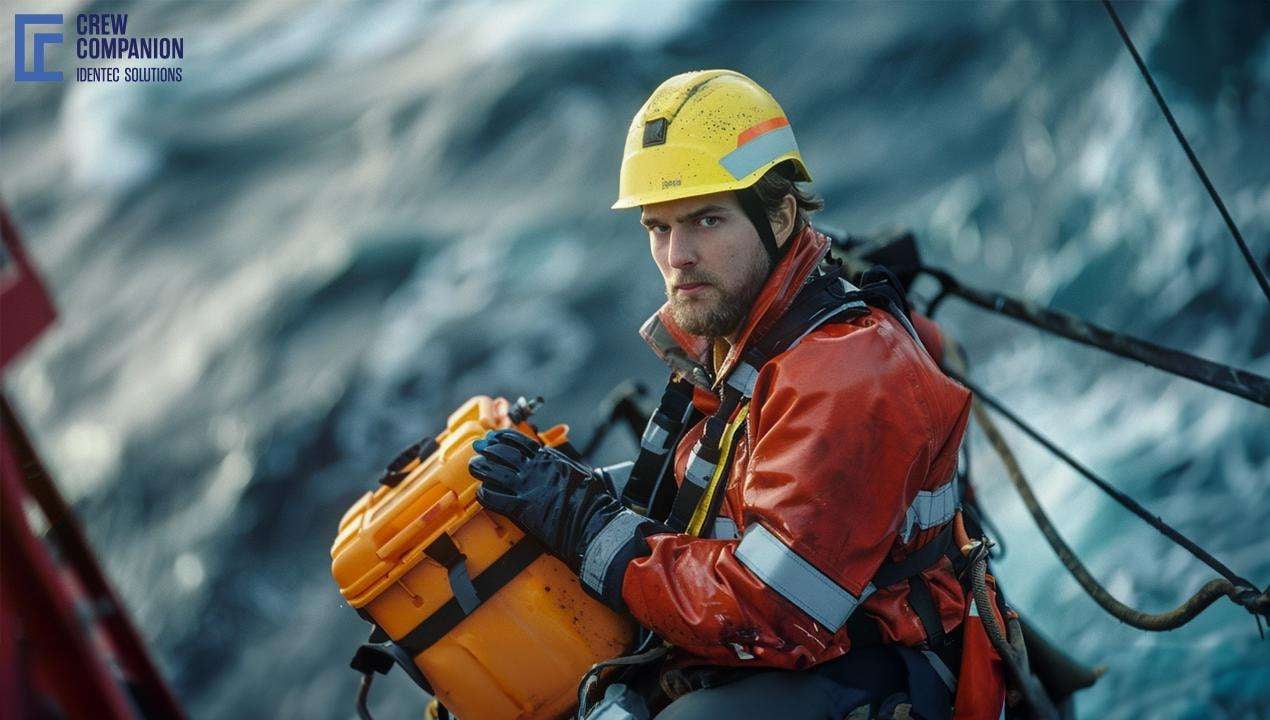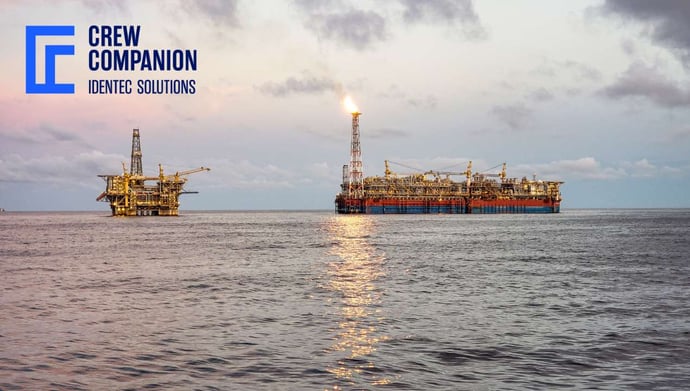Emergency Response Kit: What you need on an FPSO
| Written by Michal Wozniakowski-Zehenter

No video selected
Select a video type in the sidebar.
EMERGENCY RESPONSE KIT FOR FPSO – OVERVIEW
People can stay safe when they're working with a lot of different equipment. Safety glasses, helmets, outfits that deal with fire, gloves, and heavy-duty boots are really important, so the so-called PPE is irreplaceable; they keep workers out of harm's way. FPSOs need items like fire extinguishers - the ones that spray water, foam, chemicals, and carbon dioxide - to put out fires of different kinds. There's also firefighter gear, like fire blankets and SCBAs, which let firefighters breathe in smoke. If everyone needs to get off the ship fast, lifeboats and rafts are there for making a safe escape; these emergency boats come with related things everyone might need, water, food that lasts a while, medical supplies in case someone gets hurt, and things to signal for help in case of emergencies (learn more about emergency response offshore).
Medical kits on board cater to health needs ranging from basic first aid supplies, critical for addressing minor injuries and sicknesses with items such as bandages, antiseptics, pain relievers, and other fundamental medical provisions, to advanced medical supplies geared towards more severe injuries, featuring equipment for trauma care, emergency medications, and surgical tools. Considering the remote locations of FPSOs, many emergency response kits are fitted with telemedicine systems, allowing crew members to consult with medical experts ashore in real-time for precise diagnoses and treatment recommendations.
Environmental protection gear is also key, with equipment for oil spill containment and recovery ready to address spills promptly, using booms, skimmers, and dispersants to minimize environmental damage. Chemical spill kits, designed to manage hazardous chemical spills, include absorbents, neutralizers, and protective gear. Communication devices such as satellite phones and two-way radios are essential for maintaining contact and coordinating actions during emergencies. Emergency signalling devices, including flares and beacons, play a critical role in alerting nearby vessels or rescue services in crises. Navigation and rescue tools are equally important, with GPS devices vital for determining the FPSO's location during rescue efforts. Emergency Position Indicating Radio Beacons (EPIRBs) are designed to automatically signal distress when submerged, facilitating a swift rescue operation. Survival suits and life jackets offer individual protection against hypothermia and drowning, proving essential for survival in maritime emergencies.
There are also personal tags which indicate if every crew member mustered in a proper muster area on time (learn more about emergency response software). It can ensure that in case of real alarm, everyone will find their place to board the lifeboat, fast and without bigger complications. The captain, operation officer and offshore centre can see the results and bring additional drills to make the process even smoother.

PRACTICE MAKES PERFECT
To start, having the crew practice drills a lot where they pretend to handle emergencies is extremely important, from fires and oil spills to injured people and even people falling overboard. the drills are made to seem as real as can be so that every person knows exactly what they have to do when things get. Each crew member goes to training sessions to learn several important skills; they get the hang of using the safety gear properly, find out how to put out fires with the right equipment, learn the basics of first aid, and pick up tips on how to save lives. Plus, they're taught how to handle dangerous materials safely, figure out how to stop oil spills from spreading, and survive if they're ever stuck in the middle of the ocean.
To handle emergencies, every crew member of an FPSO has to get and keep their certifications up to date; they need these to put out fires, give first aid, and take care of the environment; they have to learn new things to make sure they're always on top of the latest safety and tech. Using simulators, the emergencies seem real; this practice feels intense because it feels like a real emergency, and it helps the crew figure out what to do when things go wrong. It's all about teaching them to think on their feet in tough situations. They don't just work alone -- they work with other emergency teams, coast guards, and firefighters. They practice working with them well before any real crisis happens, so they know they can count on each other. Plus, they're always checking on how they talk to these groups - they even use satellites and emergency signals - so that they can get help quickly when they need it.
Maintenance and Improvement of Emergency Equipment
Regular maintenance and upgrading are quite important for the effectiveness of emergency preparedness at an FPSO. In due course of time, equipment can wear out, deteriorate, or simply become obsolete either because of rapid technological evolution or due to changes in safety regulations. As it was said, regular checks, inspections, and replacements keep firefighting gear, medical supplies, and communication devices in good condition. This would include periodic testing of fire extinguishers for charge and functionality, while lifeboats and safety rafts should be tested with due diligence for their dependability. Also, the replacement of outdated technologies, such as the addition of more advanced telemedicine systems or newer, more effective devices used in the containment of oil spills, go a long way to enhance response times and assure better crew safety. Improvements in either satellite communication or GPS can be employed to enhance coordination during rescue missions or even in responses to environmental disasters. This periodic accounting of equipment used provides the FPSO with what it lacks in terms of emergency preparation; thus, necessary changes could be effected on time before any disaster strikes. The ocean is so hostile, and these challenges require eternal vigilance; hence, updating all emergency response equipment keeps the crew in attending to unexpected circumstances quickly and efficiently.
FAQS
What is included in the Emergency Response Kit for FPSO?
An Emergency Response Kit for FPSO tackles different kinds of unexpected problems blazes, oil leaks, health emergencies, and situations where someone falls into the sea. It's designed to fit the specific ship based on how big it is, where it's traveling, and what work it's doing. Inside the kit, there's gear for putting out fires, things to deal with oil spills, strong first aid materials, equipment that can save lives during crises, back-up systems in case power gets lost, gadgets to help evacuate, protective gear for crew members, devices that help navigate, sets of tools to survive tough situations, and unique clean-up packs for chemical leaks; this setup makes sure the ship is ready for many kinds of trouble and follows the important global rules for ship safety, making sure the crew can take care of problems right.
TAKEAWAY
For handling emergencies on floating oil, 're talking FPSOs here practice and getting ready is crucial. Every member of the crew does a lot of practice runs and gets trained for specific emergencies, so when something happens, they're ready to react. If something bad happens, it's good to include other emergency teams from outside. This keeps everyone on the same page and helps everyone get help faster. There are a lot of international safety rules in location, but the most important thing is to keep looking for ways to do better when things go wrong. Making sure everyone's prepared starts with following the rules and doing the right things. Everyone gets geared up with an Emergency Response Kit for FPSO to do a better job if there's a next time when things go wrong. All these things help be prepared for emergencies.
Delve deeper into one of our core topics: Emergency Response Management
Sources:
(1) https://fastercapital.com/content/Offshore-safety--Enhancing-Offshore-Safety-with-FPSOs.html#:~:text=The%20IMO's%20Safety%20of%20Life,appliances%2C%20and%20structural%20integrity%20requirements
(2) https://www.sciencedirect.com/science/article/abs/pii/S2468651418300047
Note: This article was updated on the 1st of October 2024

Author
Michal Wozniakowski-Zehenter, Marketing Manager
Michal Wozniakowski-Zehenter is an experienced marketing and project management professional. He spent most of his career on projects with a strong focus on digital marketing and event management. He is a very active voice representing offshore and mining industries through social media channels. Michal writes mainly about offshore oil and gas, renewable energy, mining and tunnelling. Compiling and sharing the knowledge within industries is one of his goals.




